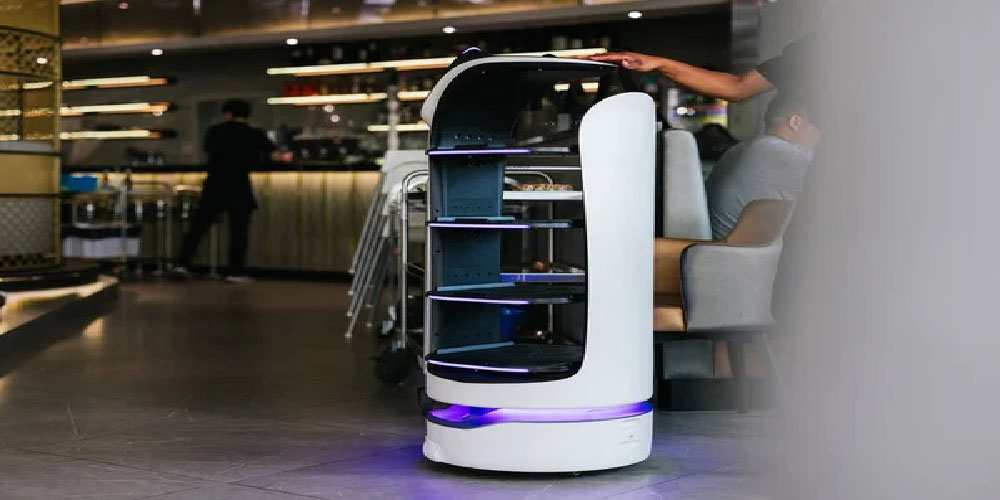Robot waiters are cutting-edge technology providing the best solution to automate your restaurant. Robot waiters are gaining popularity by leaps and bounds throughout the world. Customers in a café or a restaurant may face numerous problems during slow hours or when the staff is unavailable such as long wait spells which makes them infuriated. These issues can be handled by bringing restaurant automation systems through robot waiters.
Are you wondering what is robot waiter? Don’t fret! Here is a comprehensive guide about the robot waiter. Let’s start without any ado.
A robot waiter is a self-sufficient service enabled to receive the order and operate through a wireless network to the kitchen via a specialized electronic menu bar. A typical LCD and Keypad along with a Bluetooth unit make the menu bar user-friendly. The diner places the order using the menu bar. The order is directed to the pantry over a communication network. Finally, the robot waiter delivers food from the kitchen to the customer’s table in the restaurant.
Parts of robot waiters
A robot has two essential parts: a menu bar and the robot itself alongside some sensors to sense and follow the lane. Let’s further discuss the major parts of robot waiters.
Menu bar
The menu bar is one of the most crucial parts of a robot waiter which provides interactive assistance to the customer. The menu bar is based on a display unit that is LCD, a keypad, and a Bluetooth unit. The keypad helps the diner to select the order while LCD displays the customer’s order. A Bluetooth device provides wireless communication and enables the robot waiter to send the order request to the kitchen and reception.
Sensors
Robots follow a line-following mechanism which is why sensors are installed so that the robot servers can follow the line to reach a particular destination. Other sensors assist the robots to reckon the tables and stop at the destination to serve the food. Stop command may be guided through a WLAN wireless aerial due to the higher range as compared to Bluetooth. Sensors work as a feedback element that keeps the robot waiters on the right track.
Keypad
Keypad provides the customer with a convenient interface that enables him to select the menu and place the order.
Bluetooth interface
Bluetooth module is used to provide wireless communication between the reception, kitchenette, and menu bar. The data is transferred from the diner’s location to the reception and kitchen at a higher speed. Once the customer selects the perfect menu to dine in and places the order, it is then transferred wirelessly through Bluetooth to the kitchen for further processing of delivery.
Conclusion
Robot waiter is one of the most innovative technology when it comes to automating your restaurant with cutting-edge technology. Robot waiters have replaced human resources at a fast pace in the modern world and becoming a more common sight in our daily life. Robot servers are gaining popularity due to factors such as quick and efficient delivery of food without getting tired while freeing the human staff for other activities such as enhancing customer support and satisfaction, handling marketing activities and campaigns for better recognition of your restaurant.
